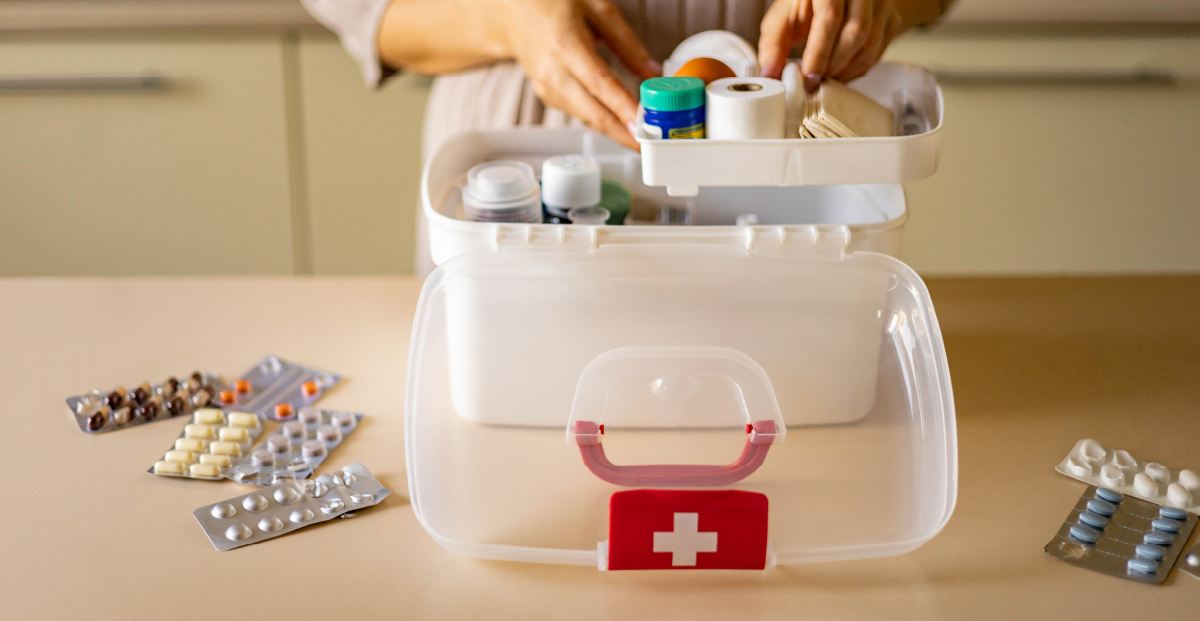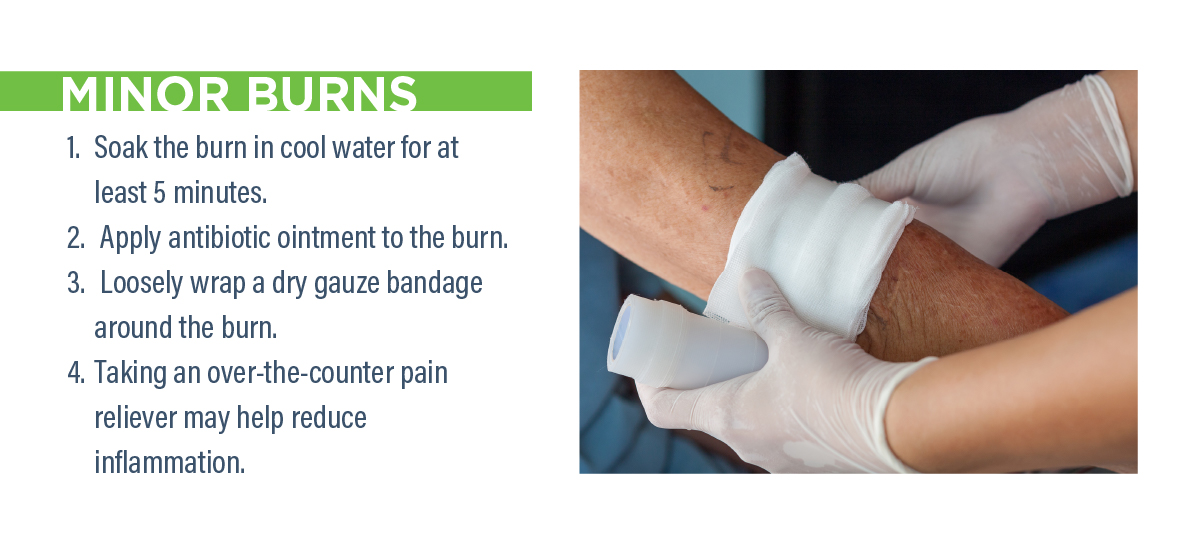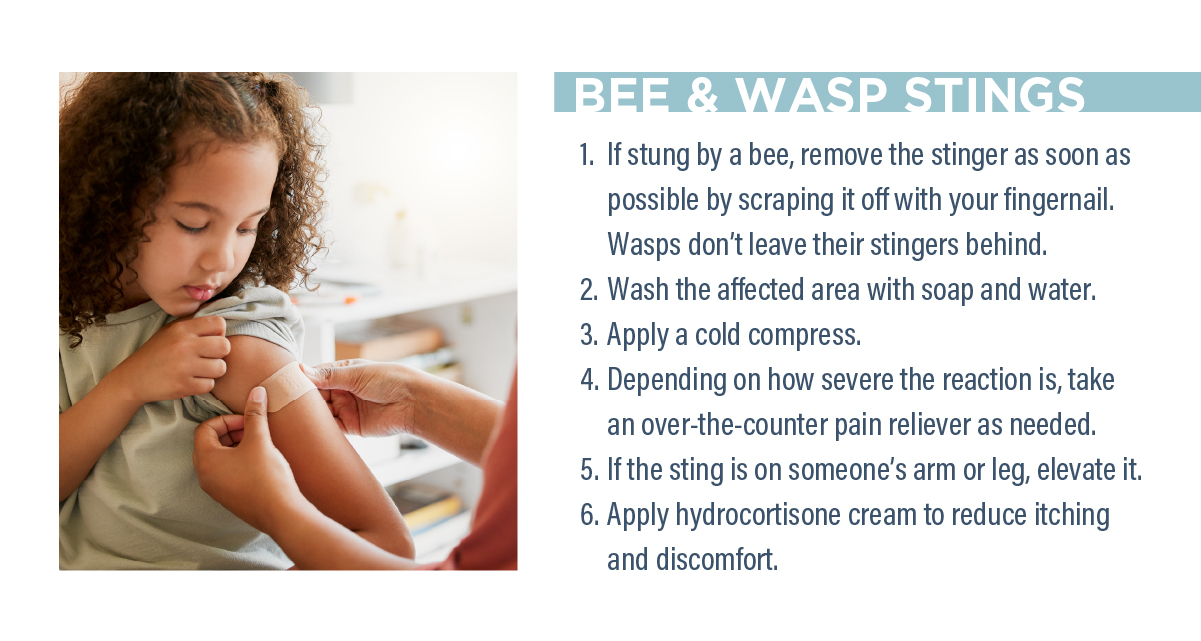
September 28, 2023
When disaster strikes, you are the help until help arrives. Having a first aid kit available and knowing how to use it helps protect you and your loved ones in the event of an emergency.
First Aid Kit Checklist
It’s best practice to have a first aid kit handy at home and in the car. You never know when you, your loved ones or a pedestrian might need care on the go.

Consider your family members and consult your family medicine physician when customizing your first aid kit to meet your family’s unique healthcare needs.
Example 1: Equip your kits with antihistamine medicine and an epinephrine injector if someone has a severe allergy.
Example 2: Include a juice box, glucose tablets and an emergency glucagon injection kit if someone in your household lives with diabetes.
Download and print your first aid kit checklist here.
Put Your Kit to Use
A first aid kit is only as effective as the person using it. Here’s how to put your first aid kit to use in treating several common injuries:



Keep Your Kit Updated
Make sure to use and replace any supplies in your first aid kit before they expire. Set a reminder to update the supplies in your kit every six months and/or as the healthcare needs of your family change.
If you or your loved ones experience a serious emergency, call 911. For minor injuries that a first aid kit can’t fix, contact Coryell Health family medicine for personalized healthcare. Our family medicine physicians build meaningful relationships with patients, ensuring a comfortable and welcoming experience. For more information or to schedule an appointment, call (254) 865-2166 today.
 Skip to content
Skip to content
